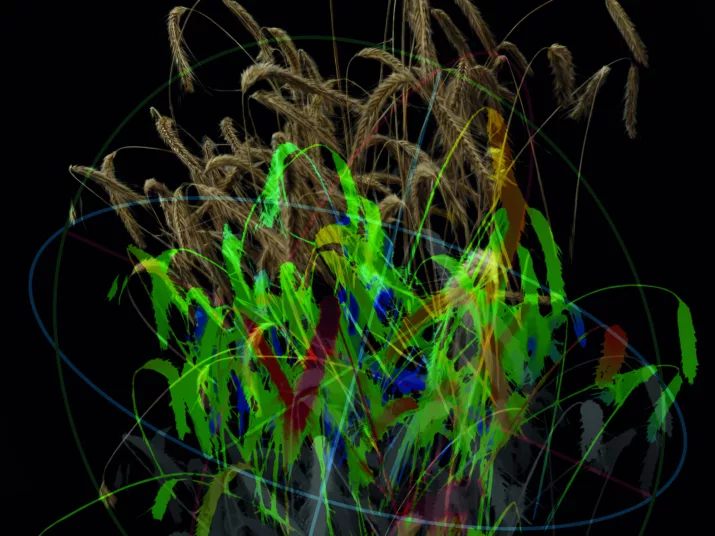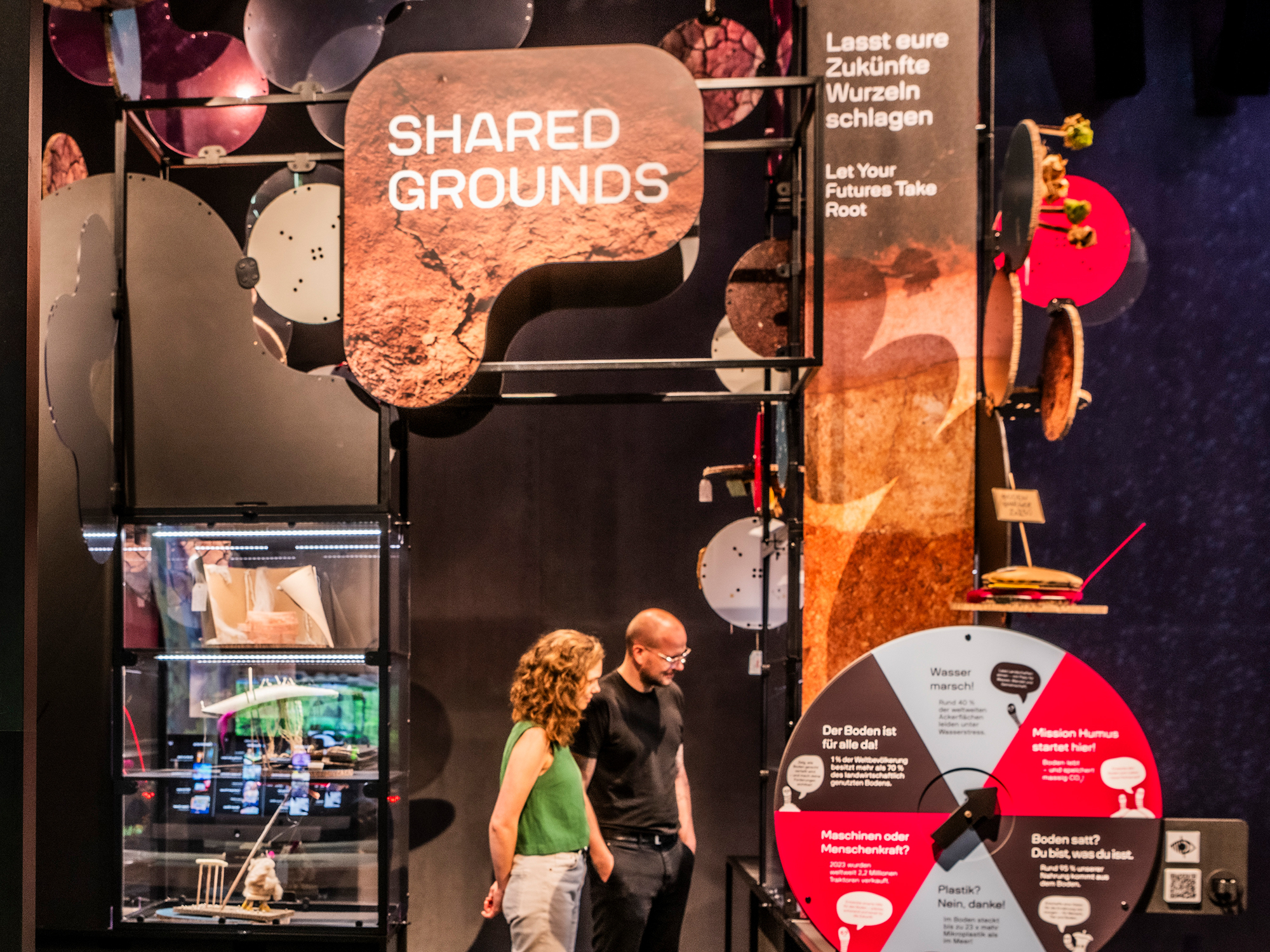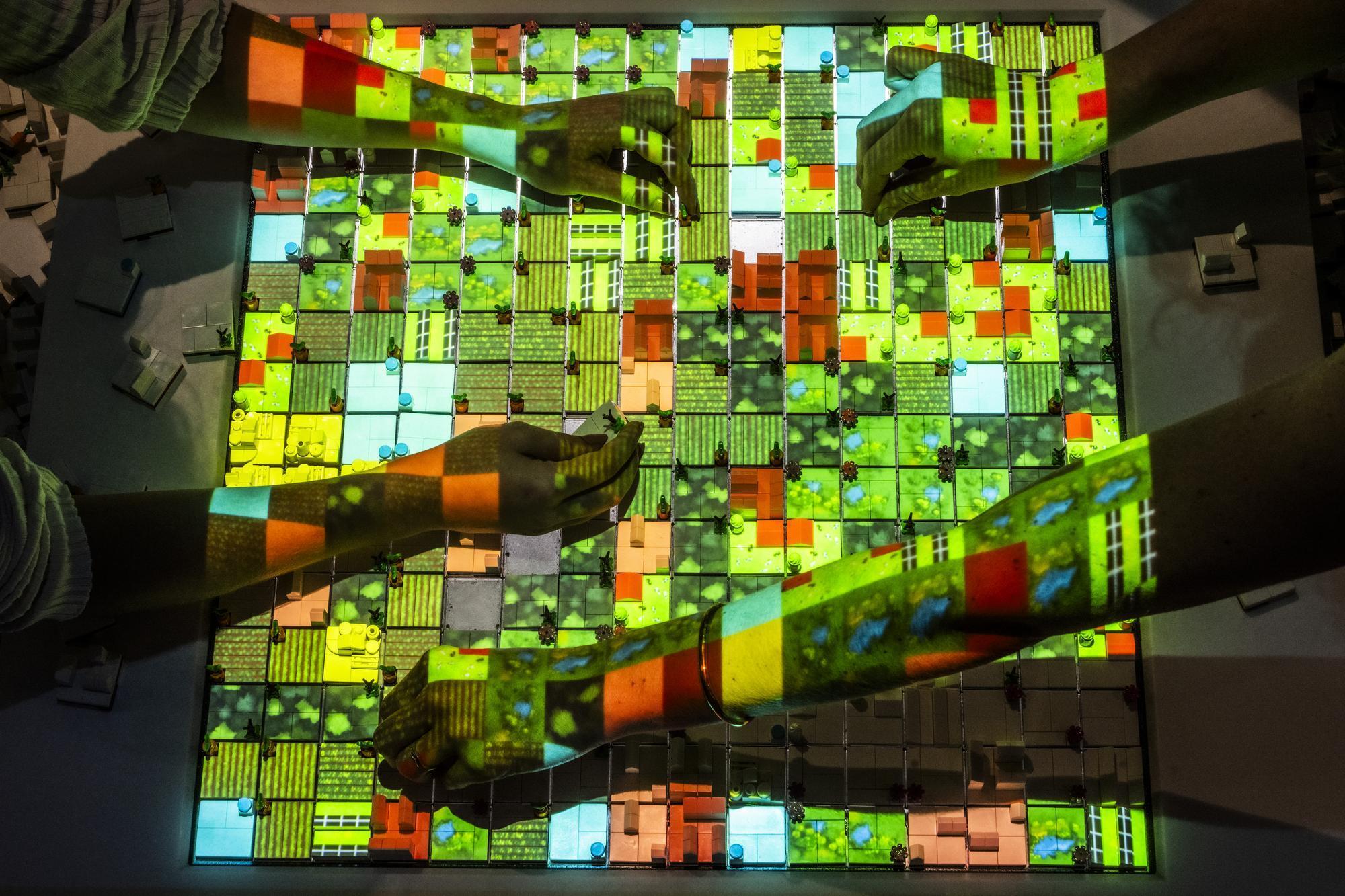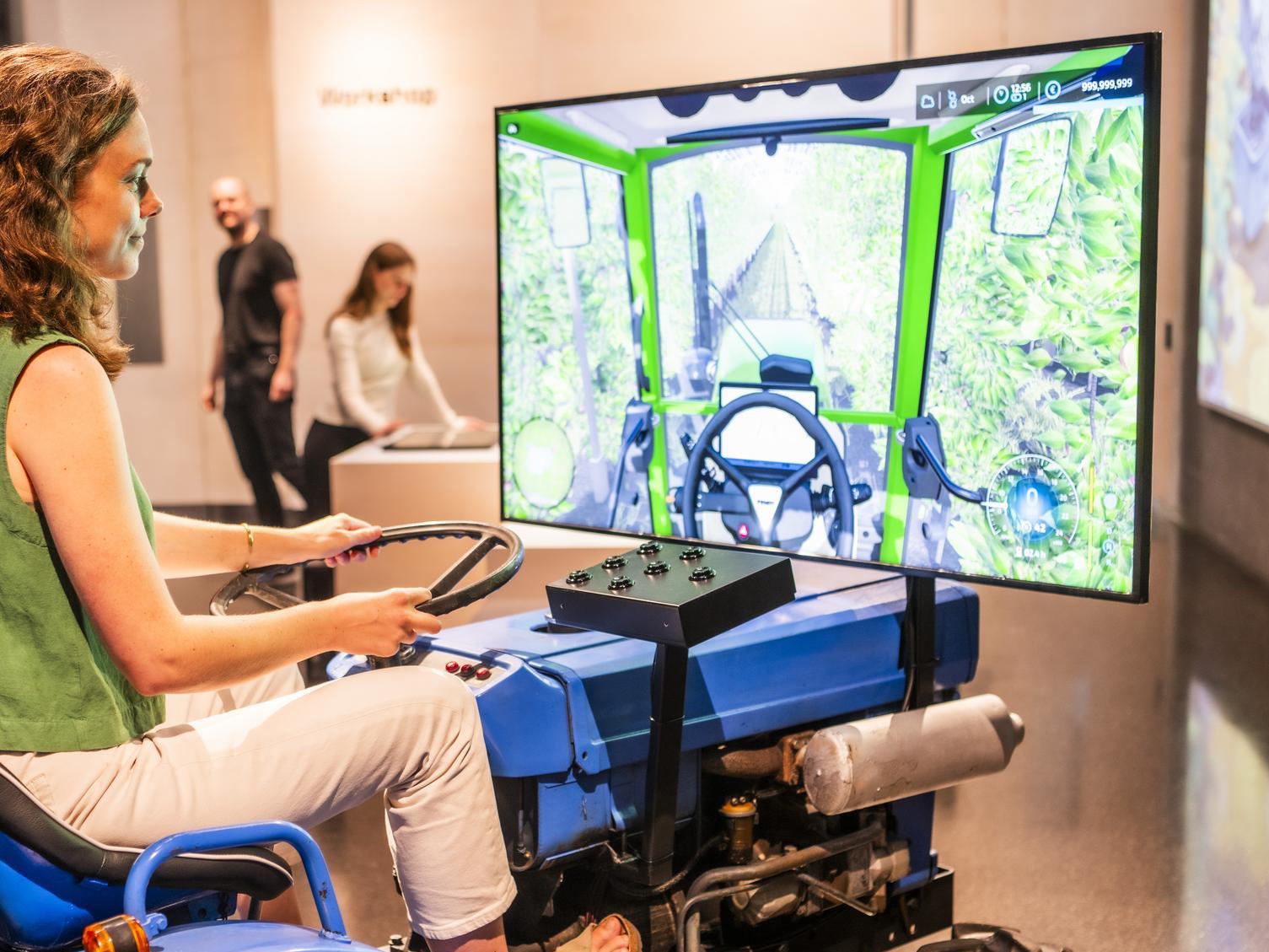
Technology in Plant Research
Invisible – Visible
When we look at a plant, much remains hidden for us? How does it grow beneath the soil’s surface? Digital technologies can help us better understand the interactions between plants, soil, and the environment. But how? These questions are at the heart of two murals in the new “Future Fields” section of the Futurium Lab.
© Fraunhofer Institute for Computer Graphics Research IGD – Dr Philipp Wree
Visual research data illustrate how modern digital technologies are used in agriculture – known as “Smart Farming”. The goal is to observe plant behaviour more precisely and promote sustainable farming practices. The visuals were developed in collaboration with the Fraunhofer Institute for Computer Graphics Research IGD.
The first mural shows the plant’s above-ground structure. Initially, it is presented as a colour-calibrated RGB image – a colour photograph with red, green, and blue channels, adjusted so that colours are highly accurate and comparable with each other. This makes even subtle changes in leaf and stem colour visible – important indicators of drought stress or disease. Two depth images, one in colour and one in black and white, provide three-dimensional data about the plant’s structure, allowing precise measurements of its length, width, and volume.
The second mural shows the plant’s root system, captured using X-ray technology. This method allows observing the roots underground without damaging the plant, showing how deep and far they spread and how they interact with the soil. Such insights are crucial for understanding the plants’ nutrient uptake and resilience under varying environmental conditions.
The combination of this data enables digital reconstruction of the plant and is an important step in research, for example in the development of climate-resilient crop varieties. What might at first appear to be purely aesthetic is, in fact, part of a technical process with vast potential for the future.
In the face of climate change, limited farmland, and growing demand for food, new tools are needed – and this is exactly where it's worth taking a closer look at the subtle signals of plants. Digital technologies make these signals visible. Cameras, sensors, and algorithms capture information that often remains invisible to the human eye. “Humans can only perceive plant characteristics within the visible spectrum. But plants also send information at wavelengths outside this range. With specialized camera technology, we can capture and process this information,” explains Dr. Philipp Wree from Fraunhofer IGD. This way, we learn to understand the language of plants and use resources more consciously. How will these technologies change how we view nature and agriculture, and what responsibilities come with them? The methods shown here open up new possibilities for data-driven, sustainable agriculture in harmony with nature.
The murals were created in cooperation with the Fraunhofer Institute for Computer Graphics Research IGD.



